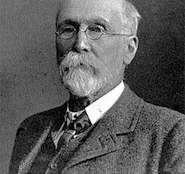The education bill is a wasted opportunity, say its critics. MATTHEW BROWN looks at a comprehensive alternative
It ought to be the thing that unites us. Comprehensive education seems such a straight-forwardly progressive idea that you’d think it’d be the one area of policy the left could agree on. The notion that all children – regardless of class, background, wealth, race, religion or gender – should be taught together on equal terms appears, on the face of it, utterly uncontroversial; it’s simply what a progressive liberal society should aim to do.
So why is education so divisive? I’ve lost count of the number of fractious conversations I’ve had about education with friends and colleagues, people of otherwise impeccable progressive credentials. Labour Party members, human rights workers, charity campaigners – when it comes to education, or, more precisely, their kids’ schools, some people’s attachment to the progressive (and democratic) principles of comprehensive schooling rapidly unravels.
One former colleague told me why she was sending her eldest child to a fee-paying school some distance from her local area. Her daughter couldn’t possibly go to the nearby (successful) comprehensive because it was ‘too scary’, she said. ‘It just isn’t like the school I went to.’ Another friend explained that she was paying for her daughter’s secondary education because the local comprehensive reminded her too much of the school she had attended. ‘I want her to have better,’ she argued.
All too often these awkward conversations end with the defensive parent resorting to the ultimate jibe: ‘You can’t really talk about it if you haven’t got children of your own; you don’t understand.’ Which is a bit like saying you can’t have an opinion about foreign policy if you haven’t been a soldier.
The principles underlying our education system, and the kind of schools we send our children to, matter – and not just to parents. They should matter to the left, possibly more than any other area of social policy, for the kind of education system we have is fundamental to the kind of society we want to create.
‘The simplest and most profound way to understand the values of any society is through its education system,’ as Melissa Benn and Fiona Millar put it in their Compass pamphlet, A Comprehensive Future. ‘Is every child given an equal chance to learn, develop their skills and knowledge to the best of their proven and latent abilities? Do the nation’s schools offer all children equal access to the rich culture that defines our common humanity? Or does the education system merely confirm the existing privations and privileges of a given social background, thus inevitably offering the less well off a second-class education?
‘Education is not just an economic activity, a means of training a future workforce,’ they argue. ‘Nor is it a morally neutral activity; the nation’s schools play a vital part in creating, confirming and debating the kind of society we live in and want to live in.’
In other words, education is profoundly political. Schools not only reflect, but create, sustain and develop the culture, values and ideologies of our society; in short, they help to shape the thinking of the next generation. They do so, not only through what they teach and how it’s taught, but through the structures of the education system itself – who’s taught, where, with whom, and for what.
Comprehensive ideal
For Benn and Millar, ‘The comprehensive ideal remains the most vibrant statement possible of the sort of society many of us want to live in… Only comprehensive schools can seek to educate children of every social class, faith and ethnic background, thereby giving all children a broadly equal chance until they reach early adulthood.’
The power of the comprehensive ideal, they write, is that it challenges ‘deep and often unconsciously held notions about class background, motivation, innate ability and those who are considered to “deserve” or merit good education and those who are not…
‘The concept of an education system delivered through a network of community comprehensive schools and colleges, non-selective in character and offering good education from five to 18 for all the nation’s children … goes beyond the old Left vs new Labour argument.’
Well, it ought to. But the anger aroused by the government’s latest education bill – the one with all the controversial stuff about trust schools and parental choice – shows that this is simply not the case. Benn and Millar’s pamphlet was launched back in January at a packed meeting in a committee room of the House of Commons as part of Compass’s nationwide campaign against the government’s proposals.
It was an extraordinary occasion, oddly reminiscent of the Labour movement’s half-forgotten past, with bodies squeezed into every available seat, perched on desks and window ledges, and squatting on every unfilled patch of floor space. Among the recognisable ‘big names’ were Melissa’s father Tony Benn and Millar’s partner Alistair Campbell, plus journalists Jackie Ashley, Michael Crick and John Harris, Baroness Helena Kennedy and Open Democracy coordinator and ex-Charter88 guru, Anthony Barnett. And that was just in the audience.
The meeting attracted media coverage chiefly because of Neil Kinnock’s appearance on the platform, alongside ex-education secretary Estelle Morris. Although NUT general secretary Steve Sinnott, MP Angela Eagle, and the two authors were also speaking, it was the former Labour leader who drew all the attention. Although he was meant to be merely chairing the affair, he made the longest speech (they didn’t call him the Welsh windbag for nothing). Not that he didn’t make some important and eloquent points.
‘Division in schooling has always produced disparity in status, esteem, funding and outcomes for schools, communities and children,’ he said. ‘The result is disadvantage and continuing underperformance for society and the economy.’
Specifically, Kinnock had been prompted to break what he called his ‘easily sustained, unbreached record of loyalty’ to the government by the bill’s plans for state-financed, independently run ‘trust schools’ – the proposals to allow religious, charitable and commercial interests to own and run schools, using their own admissions criteria, all-but free from elected local authority control.
‘We have tried having businesses directly running and owning schools before,’ said Kinnock. ‘And the Victorians banned it.’ He even quoted Gramsci – citing the old ‘pessimism of the intellect, optimism of the will’ line that used to get trotted out each time he led Labour to an election defeat.
There was no Marxism from Morris, however. As the minister who helped to orchestrate the move towards City Academies she clearly had trouble matching some of the oppositional tone of the meeting. ‘I’m proud of the record of this Labour government and much of what’s in the white paper,’ she said, sounding more like a young MP eyeing her way up the political ladder than a former Minister who’s sidled off to the House of Lords.
Yet even she railed against the potential inherent in the trust school idea for business partners to control schools’ governing bodies. ‘The belief that the market can deliver good public services is going too far,’ she said. ‘In education the behaviour of one school affects the ability of others. What school will want to change its admissions arrangements to take in more under-privileged, under-performing kids?’
For all their heavyweight presence, however, it was Benn and Millar who made the most coherent and insightful contributions. Their pamphlet, they stressed, was not written merely to oppose the current legislation, but to restate the case for a fully comprehensive education system and set out an alternative direction for education as a whole. Far from having failed, it argues, the comprehensive system has never been given a chance. ‘You can’t have a bit of a comprehensive system, just like you can’t be a bit pregnant,’ as Benn put it.
While the last 40 years of ‘comprehensive innovation’ has transformed our educational and social landscape, they say, the ‘system’ that’s been so pilloried over the last 20 years has never become fully ‘comprehensive’. Even now, there are still more than 150 grammar schools in England and Wales, and in some counties, such as Kent and Buckinghamshire, the 11-plus continues to rule.
‘The cancer of selection’ was never rooted out entirely, they argue, because ‘local authorities were requested rather than required to go comprehensive in 1965’. As a result the comprehensive system was still being introduced – piecemeal and not always with sufficient political zeal – when the Thatcher government began ‘unpicking it’ in the 1980s. The introduction of league tables, effectively creating an education market, and the re-introduction of tiers of secondary schools, through city technology colleges and grant maintained schools, began to reverse the process.
Yet, despite David Blunkett’s ‘read my lips’ commitment to no new selection, made in 1995, the new Labour government has repeatedly avoided tackling the existence of these selective and partially-selective schools. Not only has it failed to back the comprehensive model, but new Labour has actually opened up the Conservative’s quasi-market by placing even greater emphasis on league tables, increasing competition between schools, and pushing reforms based on the chimera of ‘choice and diversity’ rather than ‘quality and equality’.
Bog standard
Nine years on, more English children face selective school entry tests than when Labour took office in 1997. There are still fully selective schools in a fifth of all education authorities, and partial selection by ability, aptitude and faith in many others. ‘Selection is rife,’ as Benn said at the Commons meeting. ‘There’s selection by post-code, by parental occupation, by connection to the Church of England, by proficiency in music… New Labour inherited a pyramid system and the diversity and choice agenda they’re pushing entrenches the divisions.’
Since the 2001 election, the government has talked explicitly of creating a ‘post-comprehensive’ era, an idea, ironically, first given public airing by Campbell, who famously declared an end to ‘bog standard comprehensives’. There soon followed a rapid expansion of specialist schools, which can select 10 per cent of their pupils, accompanied by a huge growth in the number and type of faith schools, with their own overt and covert selection policies, and the (often forced) introduction of City Academies, state-funded schools in deprived areas that are controlled by private sponsors such as wealthy businessmen, religious groups, and corporations. Trust schools, with the ‘freedom’ to control their own admissions, are merely the latest addition to this diversifying, or marketising, system.
‘The once almost absurd notion of a Big Mac Academy or a fundamentalist Christian group running a set of urban secondary schools, funded by taxpayers’ money, outside any local democratic framework, now seems eerily possible,’ write Benn and Millar.
The result of all this ‘diversity’ is that ‘private, selective, semi-selective, faith, specialist, foundation and secondary modern schools, city technology colleges, further education colleges and academies co-exist, often within one neighbourhood’. This ‘hotch-potch of provision’ amounts to what London Schools Commissioner Tim Brighouse calls a ‘dizzyingly steep hierarchy of institutions’, a hierarchy, say Benn and Millar, that many parents ‘instinctively grasp’.
The much-touted ‘choice’ these schools provide is, as most parents know, little more than an illusion. In reality, choice really means competition – the competition between schools feeding that between parents who use whatever means they can to get their children into the schools deemed by exam results and league tables to be the best. Yet, as the authors point out, ‘When parents or government talk about good or bad schools, they are often referring to more subtle aspects of the institution, such as pupil intake.’ Inevitably, the winners in this free-for-all are those – generally more affluent, more educated, more well-connected – who learn how to play the game.
This scramble for schools is most apparent in cities, the authors argue, especially in London which has a hugely distorting effect on national policy. ‘In urban areas, where the market in schools is most active, parents face a bewildering array of different admissions criteria, which often benefit the most knowing and affluent but are frustrating, time-consuming and opaque for the rest.’
The government is ‘beguiled by the notion of parents as consumers’ and has created a system to fit. There is now even a Good Schools Guide – just like a good pubs guide but even more subjective – that embodies the whole ‘my child first, to hell with the rest’ thinking that this competitive structure encourages.
Listing 800 independent and state schools, it tells parents how to play and beat the system. When considering a particular school, for example, it suggests they find out: ‘Who are the pupils and where do they come from, both geographically and socially? How many Brits and, in particular, how many non-Brits whose first language is not English? Too many of the latter can grind teaching to a halt,’ it says.
Among the other questions today’s school shoppers should be asking themselves, according to the guide, is: ‘Do you like the look of the parents, and are you happy for your children to mix with theirs?’ It gives advice about what to wear to interviews, how to meet admissions criteria for religious schools (go to church before you conceive, apparently), and how to judge prospective headteachers. It’s all a long way from the comprehensive ideal.
Question of class
Hovering over all this, of course, is the spectre of class. While the achievements of the comprehensive revolution have been significant – 40 per cent of children now get two or more A levels, compared to eight per cent in 1964; three-quarters are now in post-16 education, compared to 25 per cent 40 years ago – the link between attainment and class background is ‘one of the most enduring features of the British education system’.
Recent research from University College London and Kings College London shows that school league tables measure, not the best schools, but the most middle class. In short, the more middle class the pupils, the better they do; the more middle class pupils at a school, the better it does. The danger of the government’s reforms, according to UCL professor Richard Webber, is that they’ll give middle class parents and schools yet more freedom to choose each other, leaving poorer pupils stranded in an increasingly class-segregated system.
‘By giving schools more independence and creating a market in education, you run the serious risk of polarising pupils along class lines,’ Webber explained to the Guardian. ‘The best educational achievement for the largest number of pupils will be achieved by having a broad social mix of pupils in as many schools as possible.’
Yet, despite recent amendments, such as the inclusion of a tougher, mandatory admissions code, the education bill points in precisely the opposite direction. ‘We are at a critical point in the development of education policy in this country,’ write Benn and Millar. ‘If the government continues in the direction it is currently heading, we risk creating a multipartite system, a pyramid of provision, with high-achieving state schools at the top, largely drawing from better off families, down to a hard core of low achieving schools and colleges serving the poorer children.’
Alternative vision
The strength of this pamphlet, however, is that it is not just an argument against the latest phase of reform, but an argument for an alternative vision of education, one based on ‘a modernised version’ of comprehensive schooling rooted in local communities. Despite what some Labour politicians might say – including the likes of David Chaytor and Estelle Morris who supported the amended bill on its second reading – this is not just a matter of tinkering with social policy. It is, at root, an ideological question; it’s about how people see themselves and the society they live in.
For the government, education is about individual ambition and aspiration. It’s part of our consumer society where everything we buy, and buy into, is a measure of our social status. The government’s reforms usher parents, my friends included, into seeing education in the same way, believing their only obligation is to find a school that gives their kids an advantage over others, a leg up on the ladder of social success.
Benn and Millar remind us that there is an alternative. Back in 1963, Robin Pedley, one of the pioneers of comprehensive education, wrote: ‘Comprehensive education does more than open the doors of opportunity to all children. It represents a different, a larger, more generous attitude of mind … the forging of communal culture by the pursuit of quality with equality, by the education of pupils in and for democracy, and by the creation of happy, vigorous, local communities in which the school is the focus of social and educational life.’
This pamphlet has its weaknesses – it has little to say about private education, for example, or the continued dominance of the public school élite in our political, cultural and economic institutions. And it avoids the toughest question of all – how we get from where we are now, or where we’ll be when this bill becomes law, to a fully comprehensive structure.
Yet it succeeds in the task it sets itself, reiterating ‘the profound validity of the comprehensive ethos’, and the social and political potential of a truly comprehensive system.
‘By learning with other children of different backgrounds, faiths and abilities, young people learn how to operate within society,’ it says, ‘to respect both the strong and the vulnerable, and to understand and work with all the elements of a community; this gives the child the strongest moral and intellectual basis for adult citizenship. In a truly modernised, well-funded, well-supported comprehensive system, quality can co-exist with equality.’
Surely, that’s an ideal the left can agree on.
A Comprehensive Future: Quality and equality for all our children, by Melissa Benn and Fiona Millar, is £5 from Compass. More details on www.compassonline.org.uk


